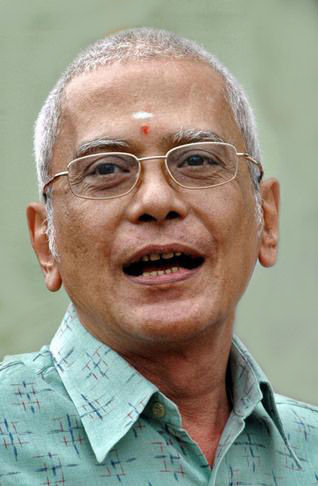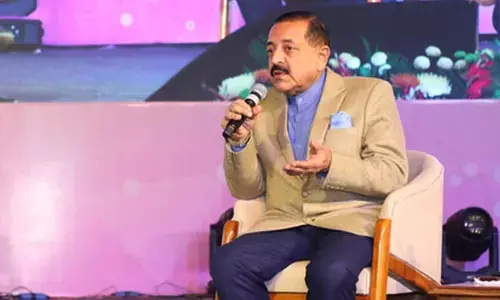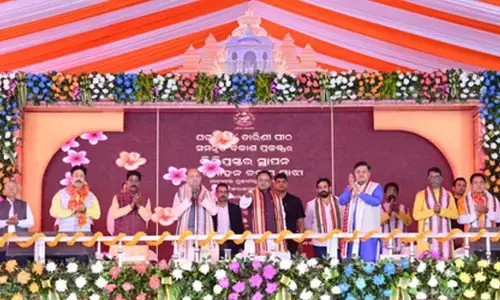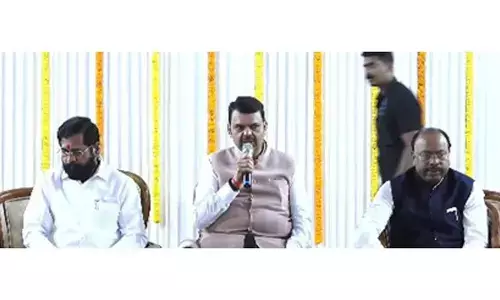The influence of Communism in India

The influence of Communism in India
Important among the factors responsible for the rise of the Left in India was the exploitative character of colonial British rule, which impacted adversity upon the Indian economy and the various socio – economic sections of Society.
Important among the factors responsible for the rise of the Left in India was the exploitative character of colonial British rule, which impacted adversity upon the Indian economy and the various socio – economic sections of Society. The land-based system had led to unfair treatment of agricultural labour and resulted in the emergence of the Kisan Sabha movement. The rise of modern industries, based on capitalistic ideology, and exploitation of factory workers, only added fuel to the fire. The financial burden on account of the World War-I, rising prices, famine conditions, manipulative practices by businessmen, the romantic appeal of Marxist ideas, the formation of the new regime in the USSR and its success, showing the triumph of the power and struggle of the people, were the last straw.
Jawaharlal Nehru paid his first ever visit to Russia, the land of socialism in 1961. He studied the works of Marx and Lenin, and was greatly influenced by their ideologies. He then applied his knowledge to the ongoing struggle for achieving equitable growth and sustainable development, of India.
Around the second decade of the twentieth century, India began to be influenced by the Gandhian philosophy of peaceful confrontation as a means of securing freedom from the colonial rulers. The Marxist ideology of the working class overthrowing the propertied exploiter by sheer force, struck a chord deep within the hearts of the agitators of nationalism. The Russian revolution, however, set in a new course in the trajectory of nationalist struggle. People began looking for an alternative idea to the Gandhian constructive programme which caused disillusionment.
Many leaders such as M N Roy, (the founder of the Communist Party of India - CPI), who was personally mentored by Lenin in Russia to prepare Indian soil for revolution against the foreign colonisers), S C Bose, Bipin Chandra Pal and Nehru developed Leftist persuasions.
Student and youth associations were organised all over the country from 1927 onwards. Hundreds of youth conferences were organised during 1928 and 1929, with speakers advocating radical solutions for the political, economic and social ills from which the country was suffering from. Jawaharlal Nehru and Subhas Bose toured the country, making speeches attacking imperialism, capitalism, and landlordism and preaching the ideology of socialism.
These developments also had a desirable impact on women's movements. Various legislations and decisions of those times can be credited to Socialist workers' agitations; such as the Unions Act, the Fundamental Rights and Economic Programme at Karachi Session, and the National Economic Policy in Faizapur session. Socialist ideas began to spread rapidly especially because many young persons who had participated actively in the non-cooperation movement were unhappy with its outcome.
There was also broad acceptance of socialist principles and adoption of the Socialist outlook by INC, post-independence; the reason why the (erstwhile) Planning Commission was often called a Soviet era hangover. Still, the Communists have always had a love – hate relationship with the Congress.
Bhagat Singh, the celebrated revolutionary, was noted to have studied in detail the life of Lenin and the Communist Manifesto during his time in jail. Periyar, who started the 'self-respect movement' and also the Dravida Kazhagham, is known to have drawn inspiration from the Russian Communist method of bringing social justice, which he thought was best applicable to the plight of the lower castes in India.
The All India Trade Union Congress (AITUC) the oldest trade union federation in India, is associated with the CPI. It was created originally by moderates associated with the INC. Founded on 31 October 1920, it had Lala Lajpat Rai as its first President.
During its initial days, the CPI focused on mobilising peasants and workers towards a revolutionary cause, while at the same time influencing the Congress in developing a sturdy Left leaning ideology. Trouble arose when, in the 1940s, Gandhi launched the Quit India movement against the British almost at the same time when the Soviet Union urged the CPI to back the British war efforts in the fight against Fascism. In their efforts to please the Russians, they alienated themselves from the nationalist struggle.
Post-Independence, the Party sprung back to form, leading armed struggles in several principalities where the princely rulers were reluctant to give up power. Most noteworthy among these was the rebellion against the Nizam of Hyderabad. In Manipur and Bihar too, the Party made its ideological impact felt strong. Having been successful in garnering enough support among some sections of the Indian population, it soon emerged as the first leading opposition Party that the Congress faced. The Party experienced its first-ever electoral success in the state of Kerala in the 1957 Legislative Assembly elections. Two decades later the Party gained a footing in West Bengal and soon after in Tripura.
By the early 1960s, however, international conditions affecting Communism had altered again, the ripples of which were felt strongly in the Left politics of India. The Soviet Union and China (two most important Communist powers of the world) at that time, were at daggers drawn over ideological implications of Left politics. The Chinese, led by Mao Zedong, denounced the Russians for leaning towards the West as a diplomatic means of spreading Communism, rather than leading to an armed struggle. The ideological conflict between the two countries had its immediate effect on the CPI, drawing sturdy lines between those who leaned towards a Soviet philosophy and those who supported the Chinese. The Indo-China border war in 1962 affected the politics within the Party with one section backing Nehru, while the other radical section opposed what they believed was an unqualified aggression towards China.
Another drawback of the Party was that it mostly looked outside India for political guidance. The internal politics within the CPI soon manifested themselves in the famous split of 1964, when the radical section leaning towards China walked out of a meeting held in Delhi, calling themselves the 'real Communist Party'. Soon after they formed the Communist Party of India (Marxist) (CPI-M), which eventually overshadowed the CPI.
Cultural tradition and ideological positioning of a certain community can never decide the fate of a party in electoral politics especially given the Indian ethos. This was why the Left suffered a drastic loss of power in West Bengal in 2011 to the All India Trinamool Congress led by Mamata Banerjee, an experience that was to repeat itself in succeeding elections.
(The writer is former Chief Secretary, Government of Andhra Pradesh)

















